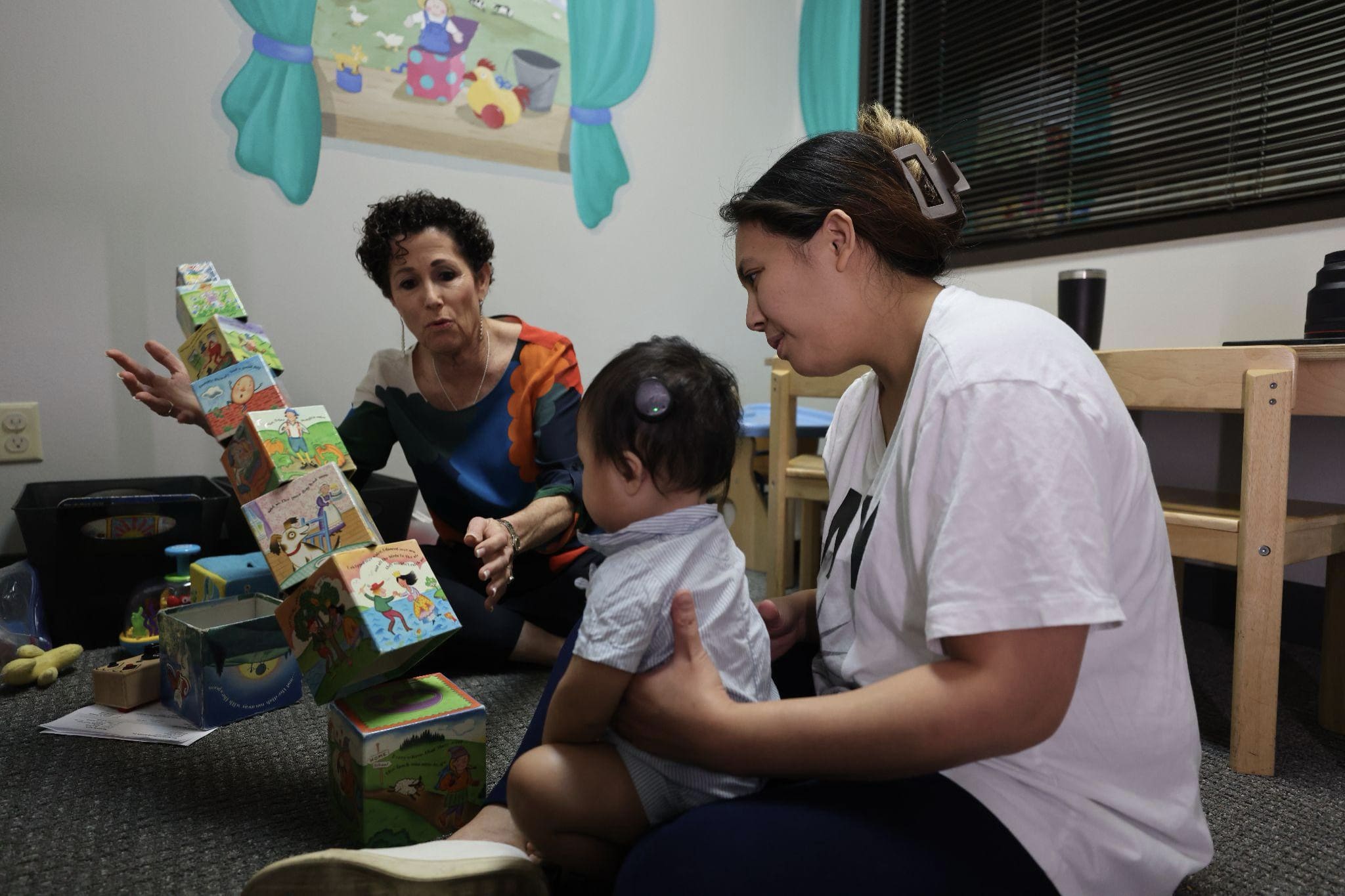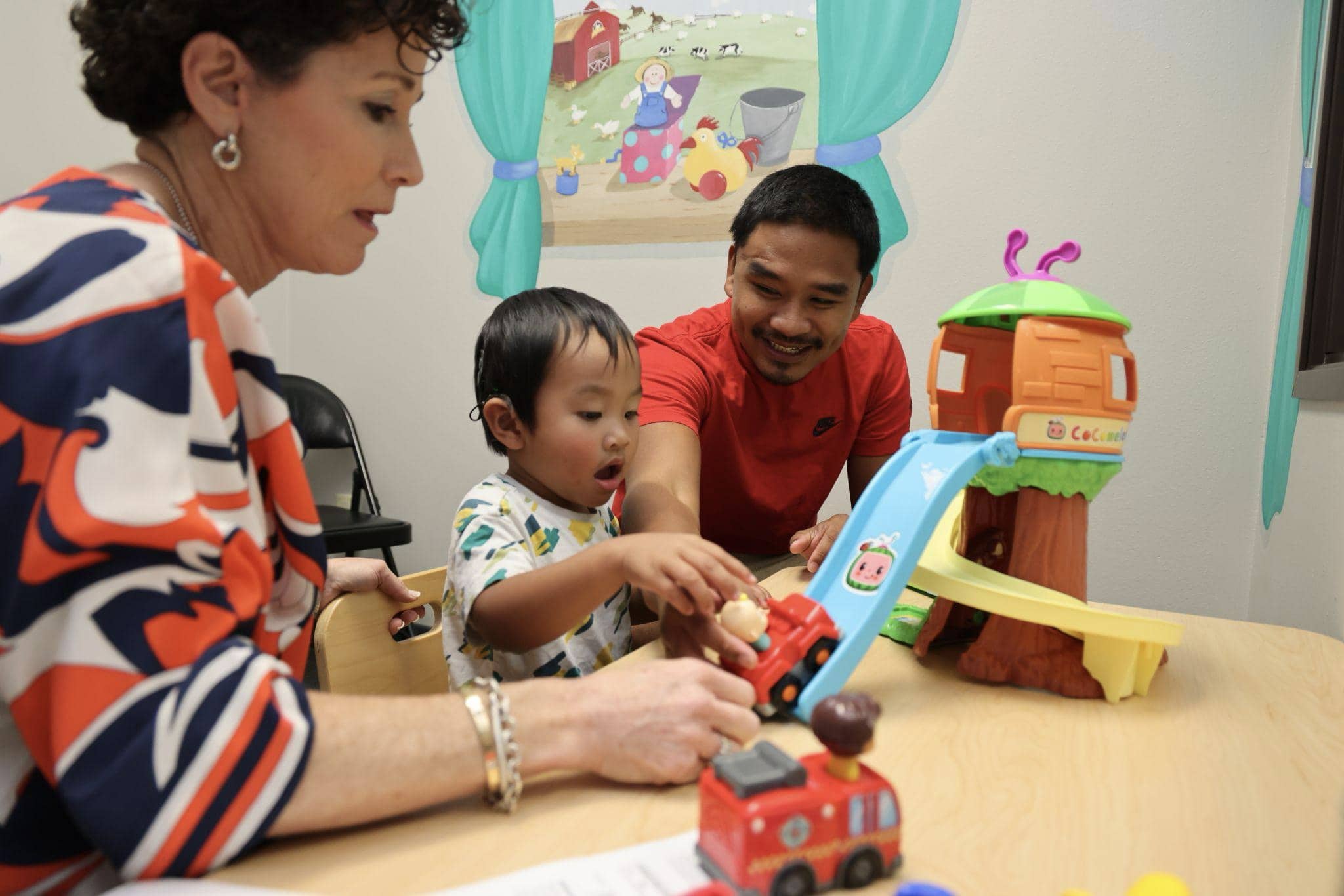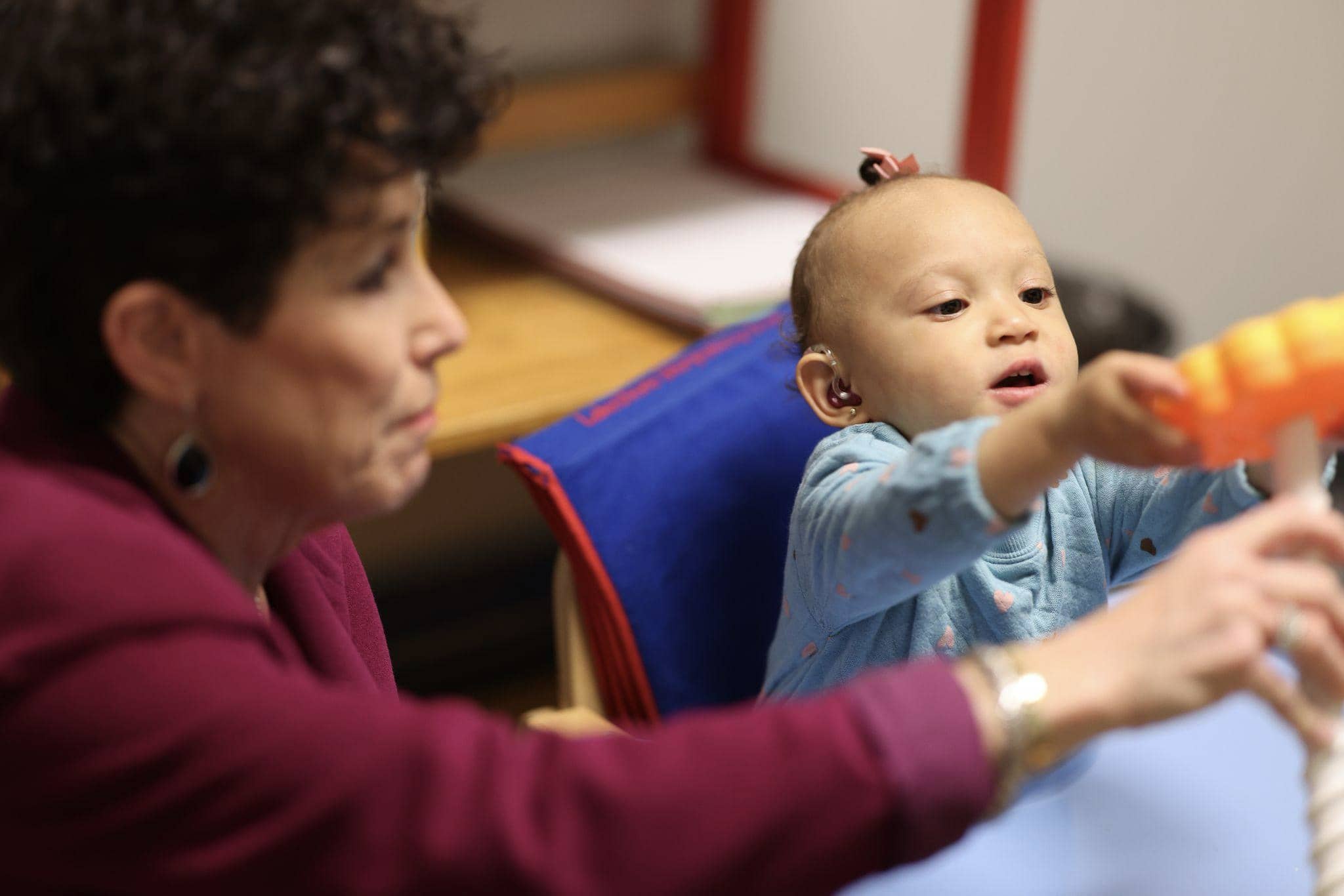
Auditory-Verbal Therapy (AVT) is a specialized method of therapy designed for infants, toddlers, and young children who are deaf or hard of hearing. This includes those who have been fitted with hearing aids and/or cochlear implant devices. The goal in AVT is to provide the child with the skills to listen and communicate effectively through spoken language, enabling them to thrive in various typical social and educational settings. Our listening and spoken language specialists who are highly trained in the field of hearing impairment will guide you and your child, providing you with strategies that will allow your child to thrive in the mainstream. With active involvement from parents and caregivers, our holistic approach extends beyond therapy sessions, ensuring consistent support and reinforcement and carryover at home.
Our primary objective is to empower children who are deaf and hard of hearing to achieve language proficiency. Through structured intervention and personalized support, children enrolled in this methodology will acquire the ability to communicate effectively in a hearing and speaking world with long-term success. Included in AVT is enhancing the auditory skills through the guidance of a listening and spoken language specialist who will encourage the development of spoken language without visual support provided through lipreading.
Early intervention is key to maximizing the benefits of AVT. Children as young as two to three months of age, utilizing hearing aids or cochlear implants, stand to gain significantly from our therapy services. Whether the hearing loss is congenital or acquired, permanent or temporary, mild or severe, our tailored interventions cater to diverse needs and circumstances.


At Bliss, our caregivers play a pivotal role in their child’s therapeutic journey. Equipped with essential techniques and strategies, caregivers actively engage in therapy sessions and continue the learning process at home. By creating a supportive environment and integrating auditory stimulation into daily activities, caregivers enhance the effectiveness of therapy and promote sustained progress.
Unlike communication methods reliant on visual cues, such as lip-reading or sign language, AVT focuses on stimulating the auditory pathways of the brain. By prioritizing spoken language development and involving caregivers in the learning process, our therapy promotes comprehensive language acquisition and integration.